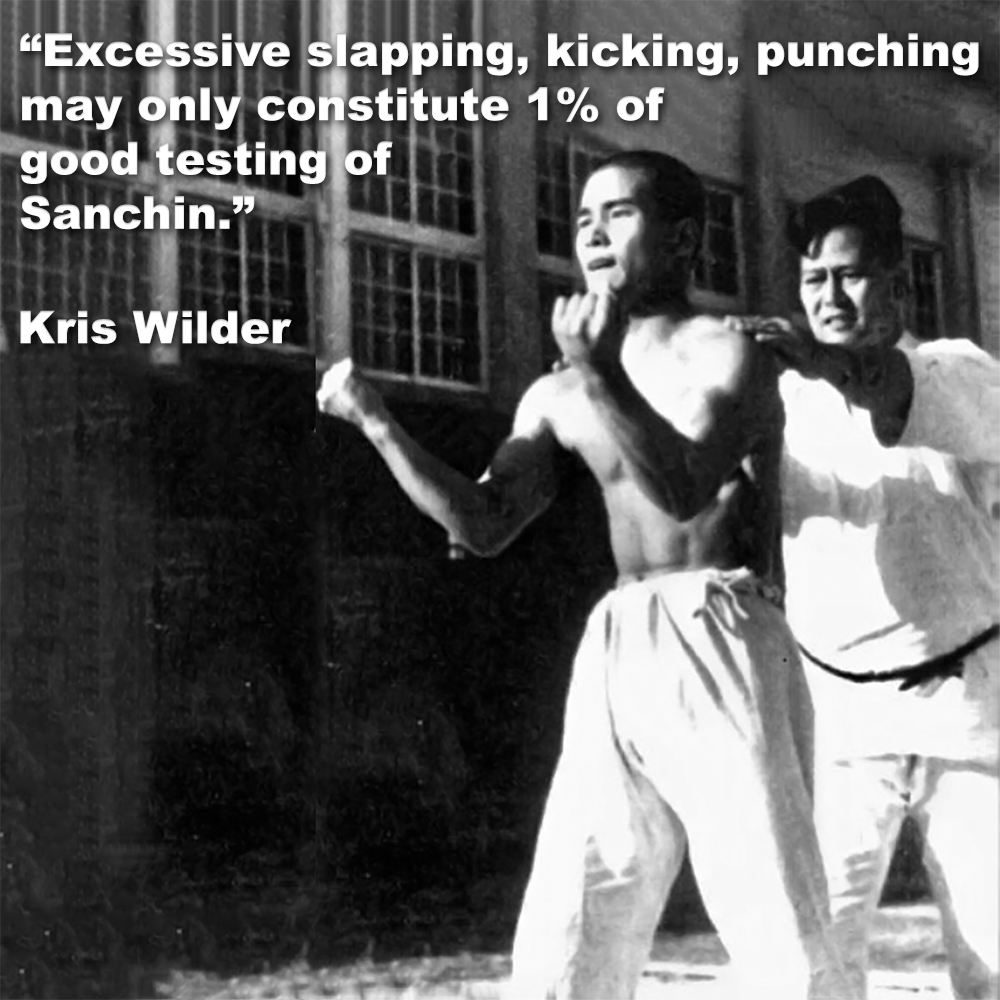
(1 minute and 52 second read)
Sanchin kata, with its robust stances and focused breathing, embodies the essence of karate’s core principles.
.
Its testing, however, often veers away from this philosophical foundation, resorting to methods that clash with the true purpose of ‘shime’.
.
“Shime,” (締め) derived from the verb “shimeru,” implies “to lock,” “tighten,” or “shut.”
.
In Sanchin kata, this translates to locking the body into a solid structure, shutting off vulnerabilities and generating a stable platform for strikes. It’s a self-directed process, the focus being on the practitioner, not the tester.
.
Modern testing often misinterprets shime, employing forceful strikes and percussive blows, some instructors using implements such as a ‘shinai’ to add a further disruptive force.
.
Often a spectacle of percussive strikes – slaps, kicks, punches – meant to impress an audience. This approach drowns out crucial feedback, with the practitioner, reacting instinctively to the shock, which then has no space for analysis or meaningful improvement.
.
This approach, aimed at impressing rather than guiding, is counterproductive.
.
Strikes deliver blunt feedback, hindering analysis and meaningful learning. Excessive physicality, while visually stimulating, undermines the true essence of testing.
.
The traditional method of shime testing resembles a building process, not an explosion. Progressive pressure should be applied by the tester which allows the student to feel their structure’s weaknesses and gradually refine it. This focuses on study, not on reaction.
.
It is not about brute force dominance; it’s about cooperation and guided correction. It begins with light touches, ensuring muscle activation, and progresses to controlled resistance that mirrors the movements within the kata.
.
Verbal guidance, postural adjustments, and self-observation, help the student on the way to progression and proficiency.
.
The intensity of testing should match the student’s level. Ego-driven displays of force have no place in this process. Respecting and tailoring the testing experience to their current level of practice.
.
And when practiced correctly, this training is a powerful tool for deepening the understanding of Sanchin kata and your karate in general.
.
But you need to move beyond the spectacle of striking the practitioners body to see if they buckle under your power, it’s not about you, and how hard you can hit.
.
The entire process of shime training is about cooperation and study, and not brute force – it is there to help the student build a strong, refined foundation. It’s not about breaking the student, but to find the weak spots in their structure. The goal being discovery, so the practitioner can correct any weakness, allowing the student to study their body and the teacher aiding the student.
.
“Excessive slapping, kicking, punching may only constitute 1% of good testing of Sanchin. It looks great – too childish eyes.” – Kris Wilder
.
.
References. With thanks to Kris Wilder
.
.
